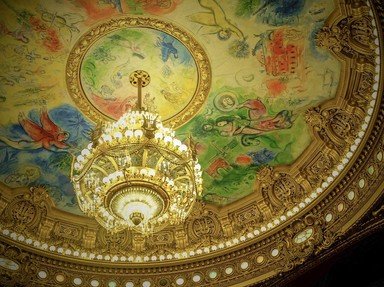Quiz Answer Key and Fun Facts
1. The first circle of Hell is known as Limbo, in which the souls of the "righteous pagans" (those who led virtuous lives, but were not of the Christian faith) lead a serene and happy existence, deprived only of the Divine Vision. Which of these operatic title characters does NOT appear in this circle?
2. The second circle of Hell is the Circle of the Lustful, in which the souls of those who sinned against chastity are whirled around incessantly by their own passions. Chief among these are the tragic lovers Paolo Malatesta and Francesca da Rimini, to whom Dante devotes one of the most affecting passages in the "Divine Comedy". Which Italian composer wrote an opera, based upon a play by Gabriele D'Annunzio, about this tragic pair?
3. In addition to Paolo and Francesca, Dante also spots this adulterous lover, who is the subject of an opera by Wagner.
4. Have you noticed that we're spending a lot of time in the Circle of the Lustful? Also seen there are three queens, who had profaned their widowhood with unseemly affairs. Which of these is NOT one of the three?
5. In the Seventh Circle of Hell, the violent are doomed to spend eternity immersed in a river of blood. Among these is Guy de Montfort, a contemporary of Dante's who notoriously murdered his first cousin, Prince Henry of Cornwall, before the altar of the church of St. Silvestro in Viterbo. Montfort is a principal character in which of these later Verdi operas?
6. Also in the Seventh Circle of Hell, the panderers, flatterers, and seducers wade eternally in a sea of (ahem) human filth. One of these is a famous hero of Greek mythology, whose vengeful and filicidal wife Medea was the subject of operas by Charpentier and Cherubini. Who is he?
7. In the Seventh Circle, Dante also spots "... the harlot Thais". Is this the title heroine of Massenet's opera?
8. The Eighth Circle features fraudulent counsellors, chief of which is the great hero Ulysses. Ulysses is the subject of Monteverdi's opera "Il Ritorno d'Ulisse in Patria". Which of these French composers wrote a seldom-performed opera about Ulysses' faithful wife Penelope?
9. In the Eighth Circle, Dante encounters Gianni Schicchi (in the form of a rabid dog), whose incredible forgery of the will of Buoso Donati is the subject of Puccini's opera. Does Buoso himself appear in the Inferno?
10. There are a fair number of Guelphs and Ghibellines scattered throughout both "L'Inferno" and "Purgatorio". In which opera by Bellini do these historically warring factions play a prominent role?
Source: Author
jouen58
This quiz was reviewed by FunTrivia editor
agony before going online.
Any errors found in FunTrivia content are routinely corrected through our feedback system.
